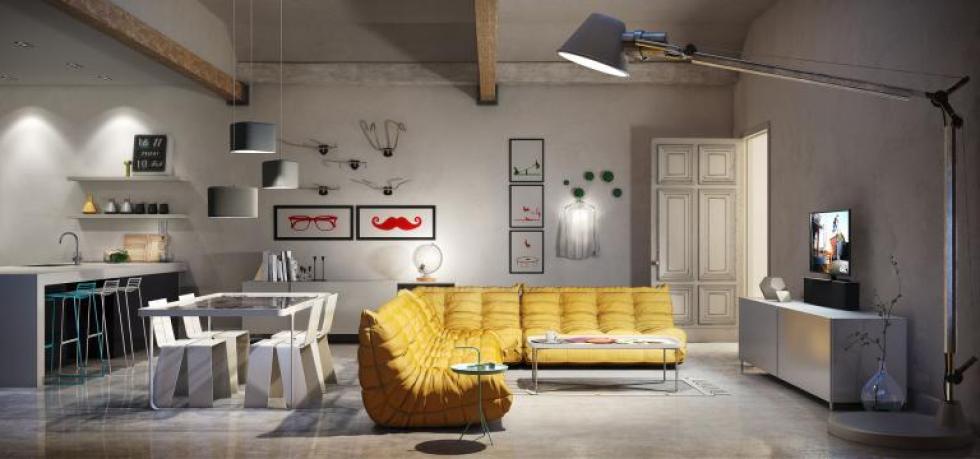

Tangible Reality... what on earth does that mean? To me it means producing something that the viewer will be able to believe despite the 'how' being, in reality, impossible. To convince that there is some chance that what they are seeing is normal. To create a thread of believability and acceptance where there shouldn't be any.
In a Place Called Home we reflected on how interior design can be used to express individual personality. After creating a series of still images we wanted to develop a film piece that would continue to explore how the same space could feel totally different from one design to another. Finding the right way to do this could allow clients to show multipurpose spaces or multiple interior design options in an engaging way. It would create room for individuality and draw people in without becoming overly complex or tricky to follow: more natural in effect, so as not to draw attention away from the designs themselves.

Since we'd spent so much time and effort on the finer detail of the designs we wanted to retain the realistic nature of the work. This got us thinking around how we could physically transform a space from one design specification to another without completely sacrificing all sense of reality. Therefore a chair flipping or melting, or moving of its own free will felt wrong here. It became an exploration into making the 'how' not so entirely implausible that the piece became unrealistic.

Having established what we wanted from the film, the idea was born to use light as a form of transformation. Everyone accepts that light changes everything it touches; at the flick of a switch a cold, evening room can be transformed into a warm, inviting space. So why not push that further? By using something people see as an everyday occurrence, something expected, we could in theory mask something completely unexpected.
When faced with a dark room, turning on a lamp would be perfectly normal. The fact that the furniture might also change with the light becomes a secondary event. We explored this idea in the film, using the change in light to switch out furniture and textures in a manner that doesn't feel like an unnatural event.

When it came to production we toyed with the idea of rendering out seperate scenes and compositing everything towards the end to achieve the lighting effects . This would make it more flexible for timing changes, etc, down the line. In the end we instead opted to animate it all in scene so that we could layer up the light changing effects nicely, and again stay true to that sense of "tangible reality".
Here is our teaser film where we start to test the theory. Down the line we'll extend this into a full exploration of the space and see how far we can push the idea.
Matt Clayton
09 May 2014